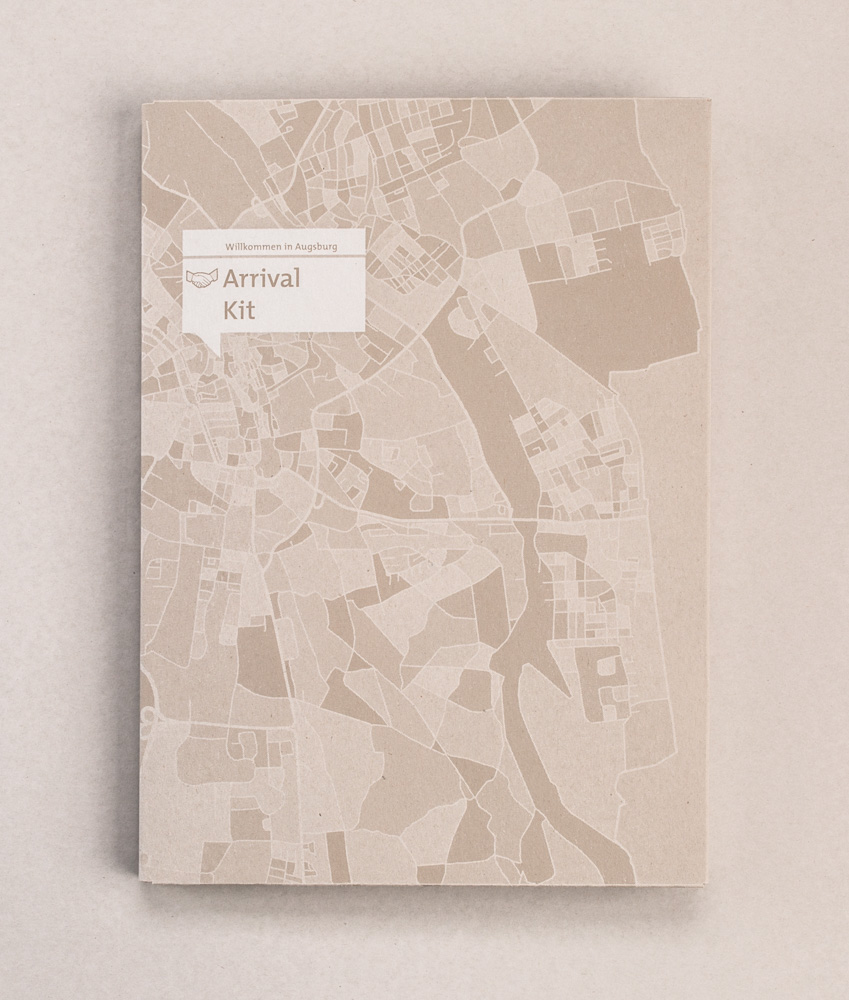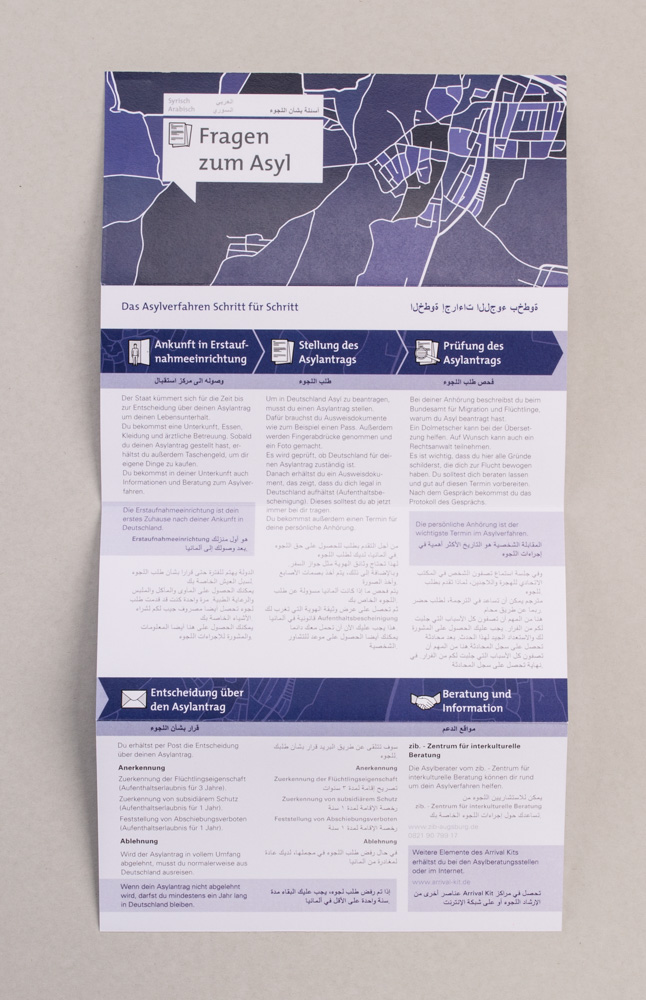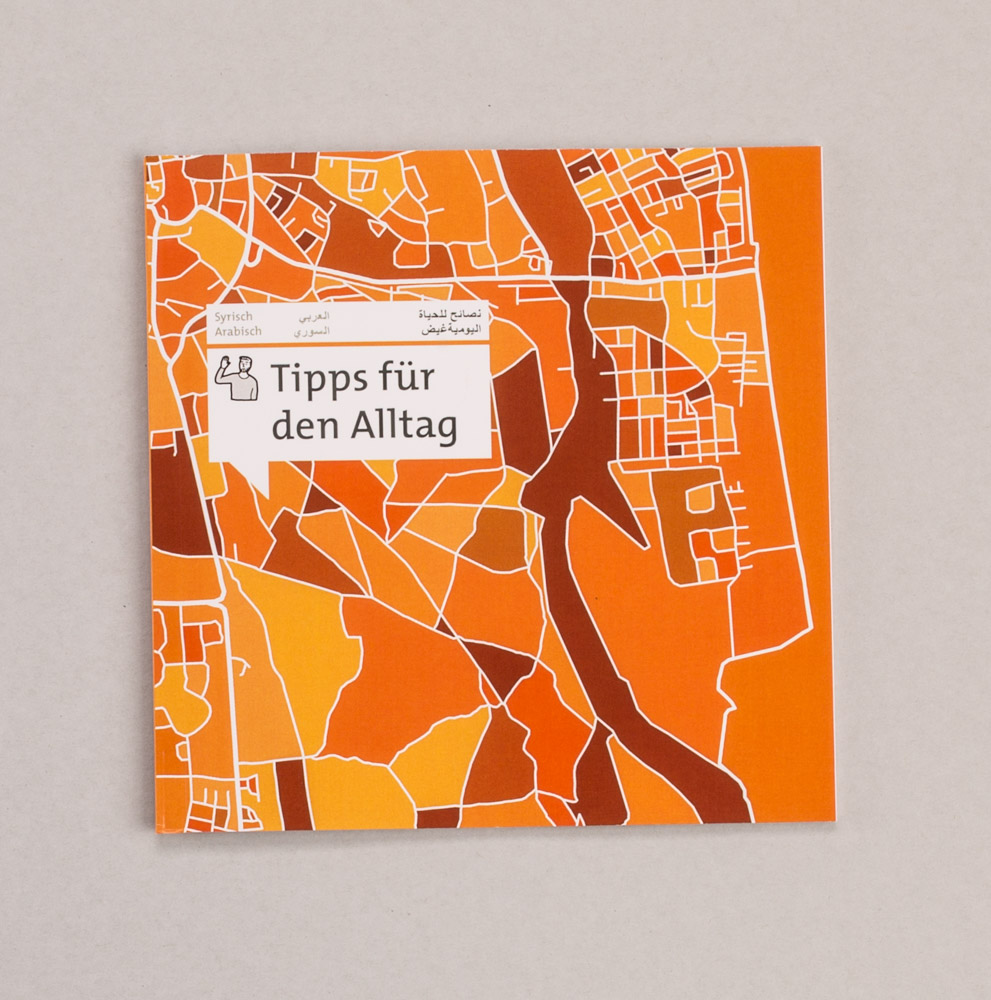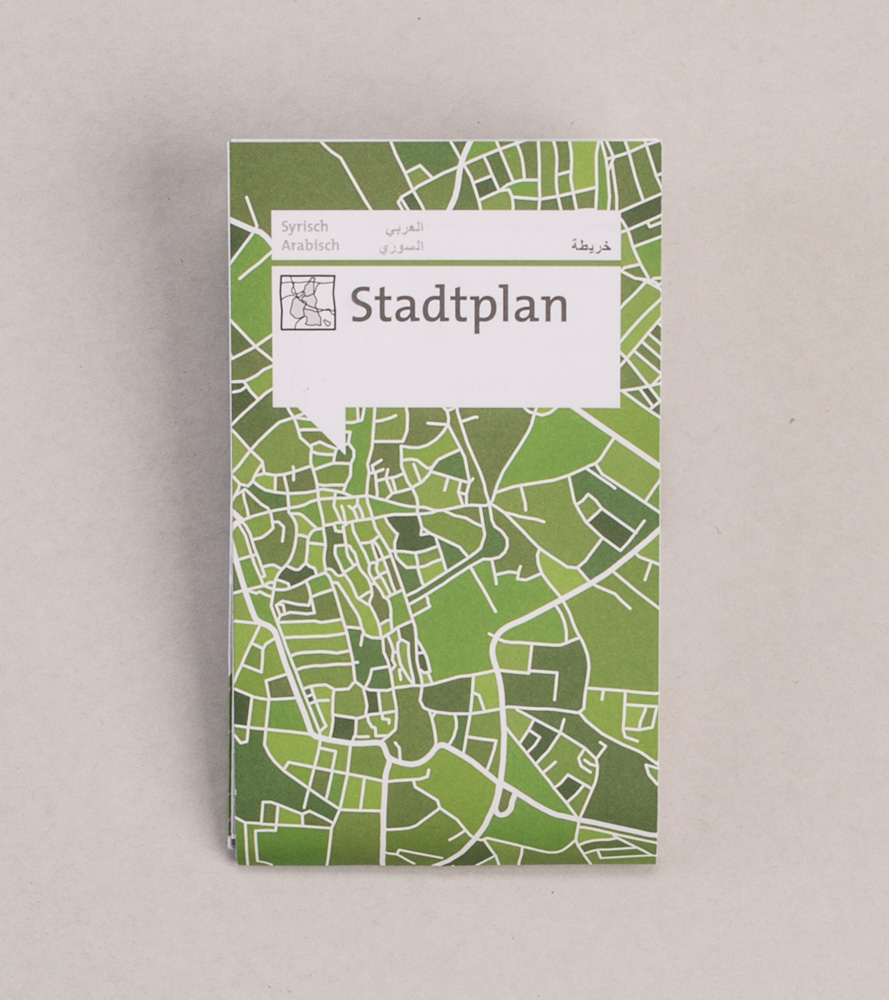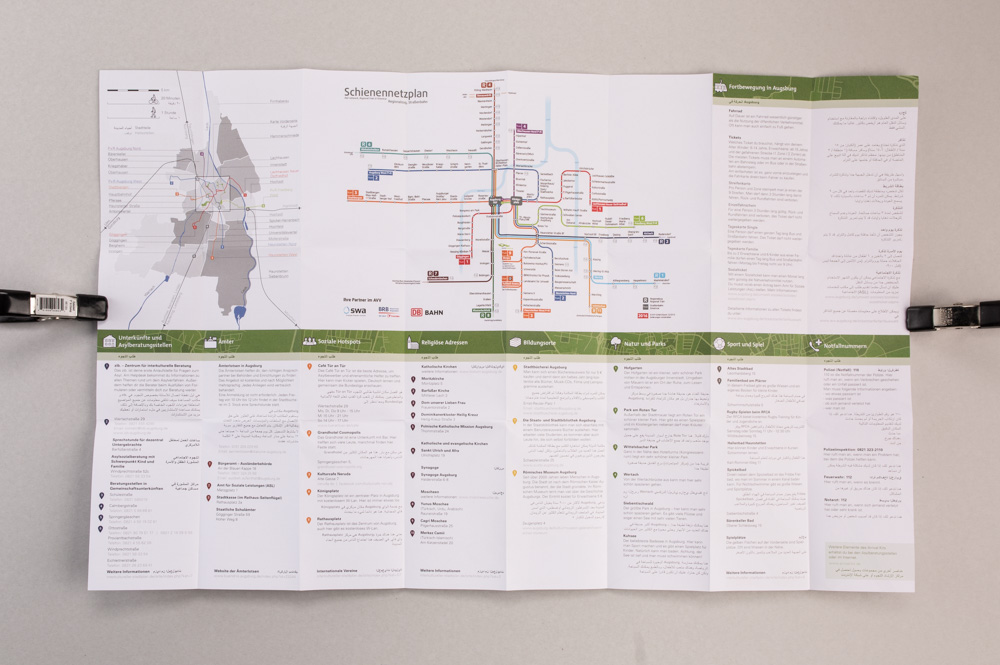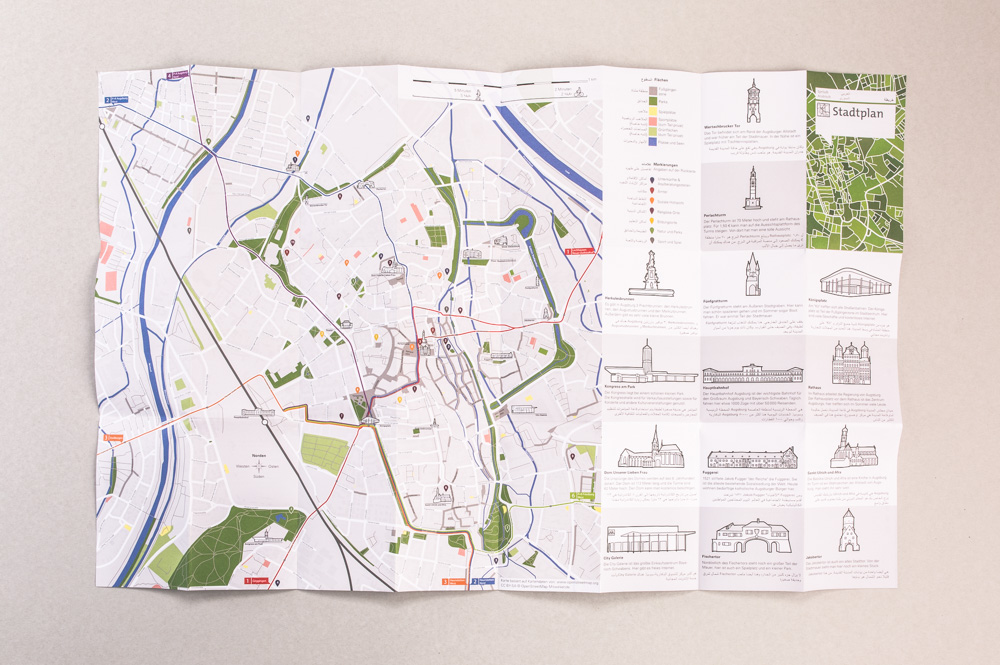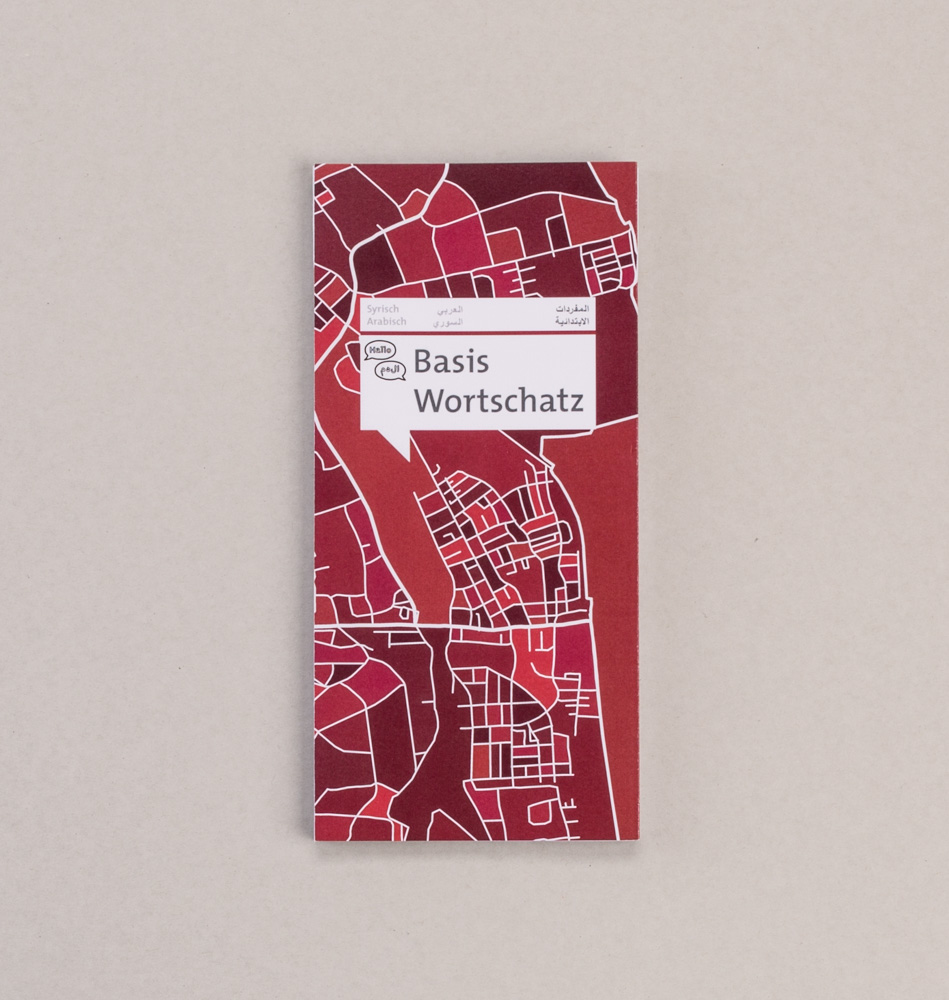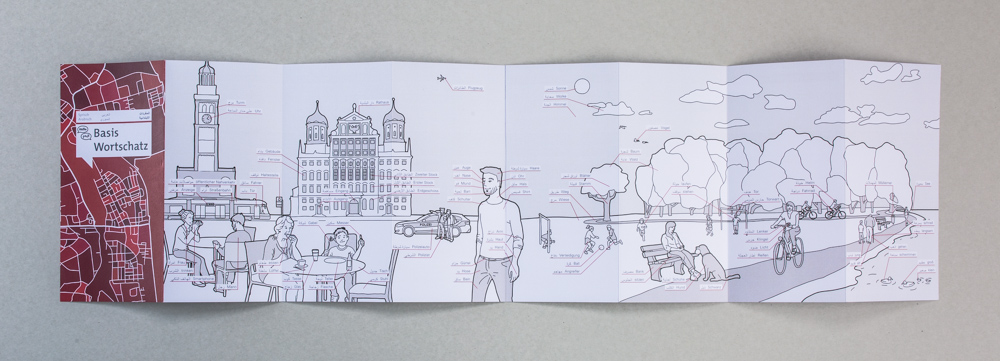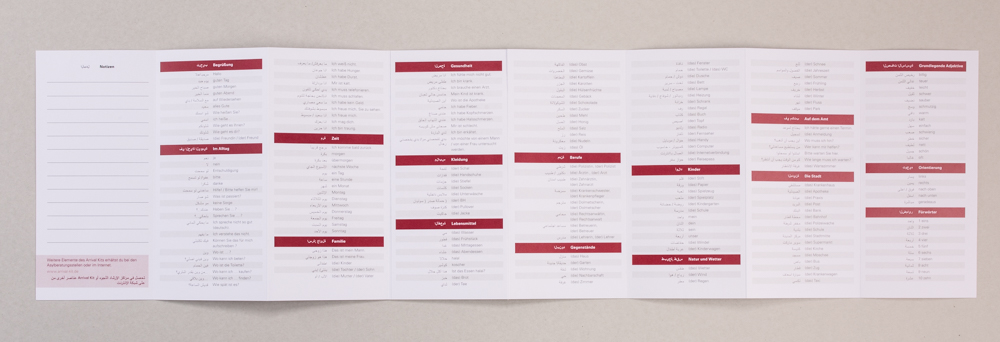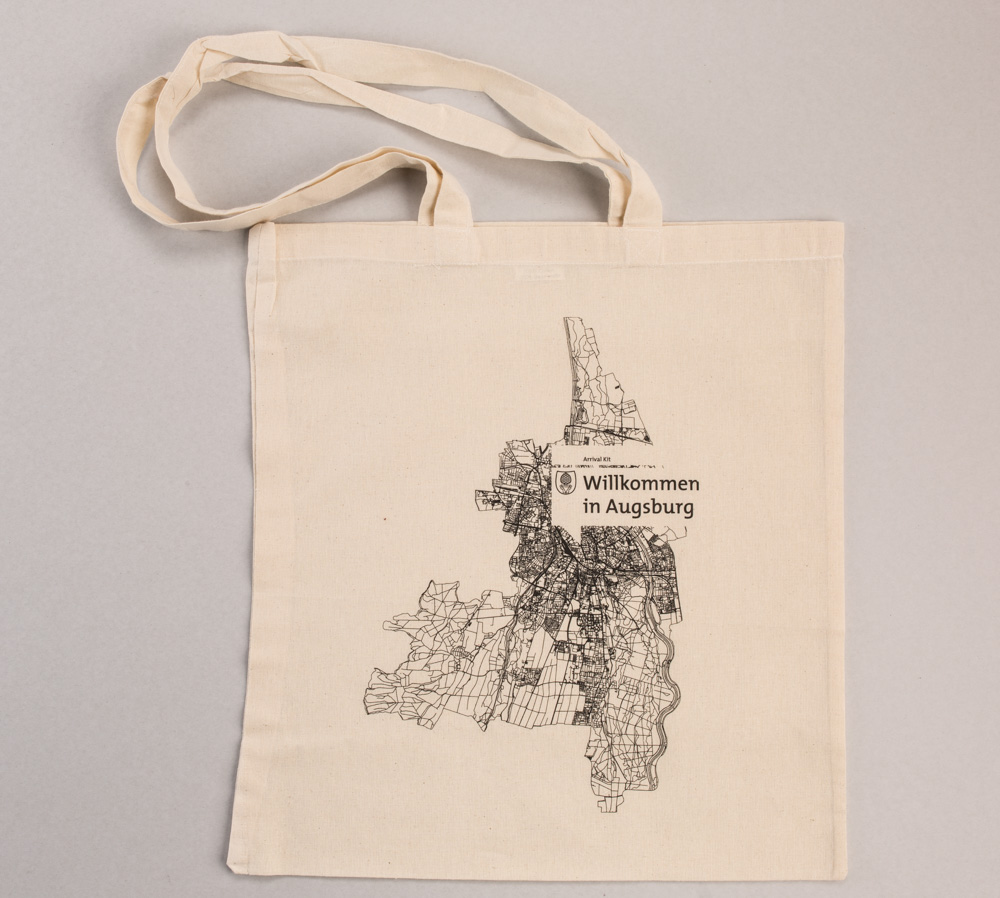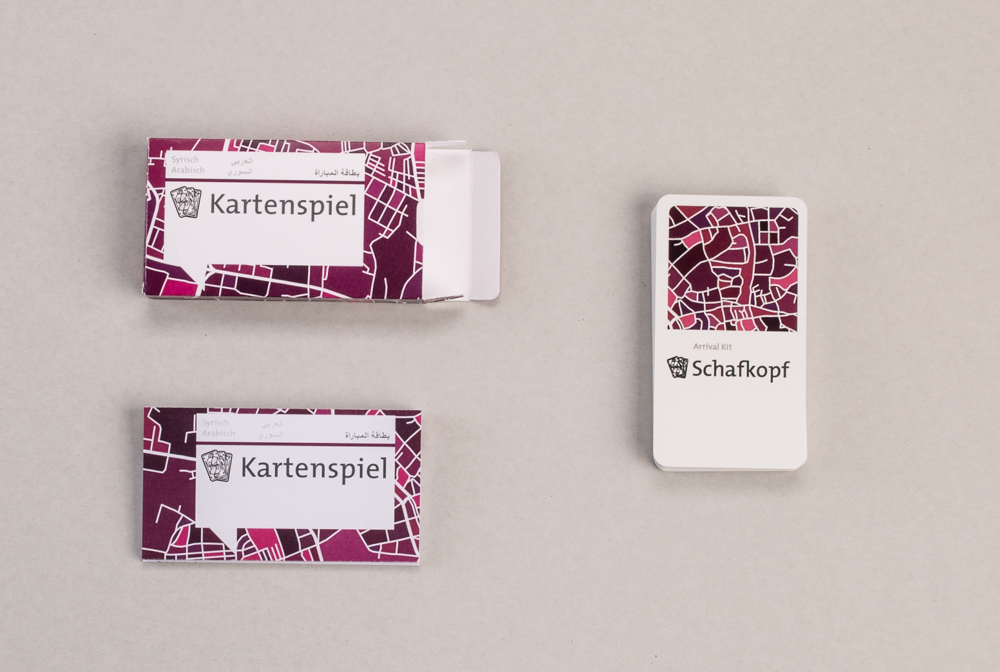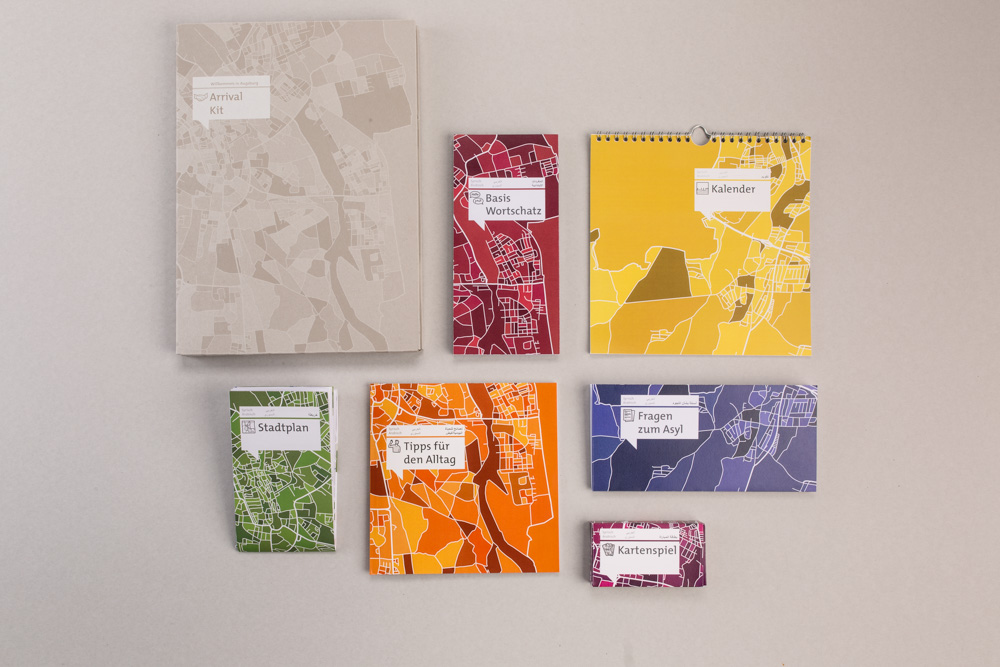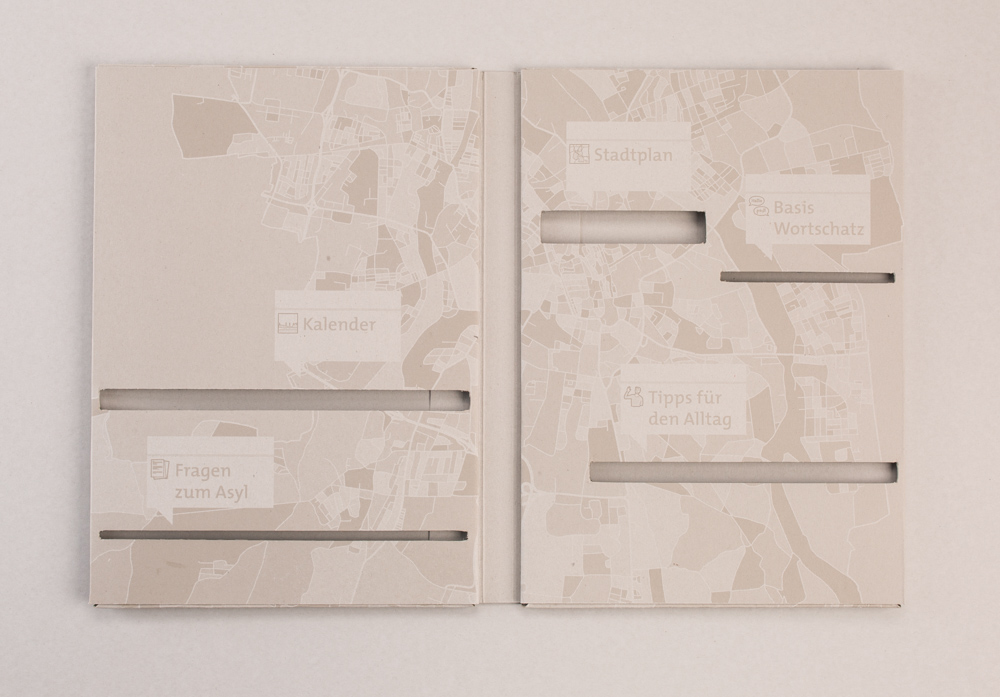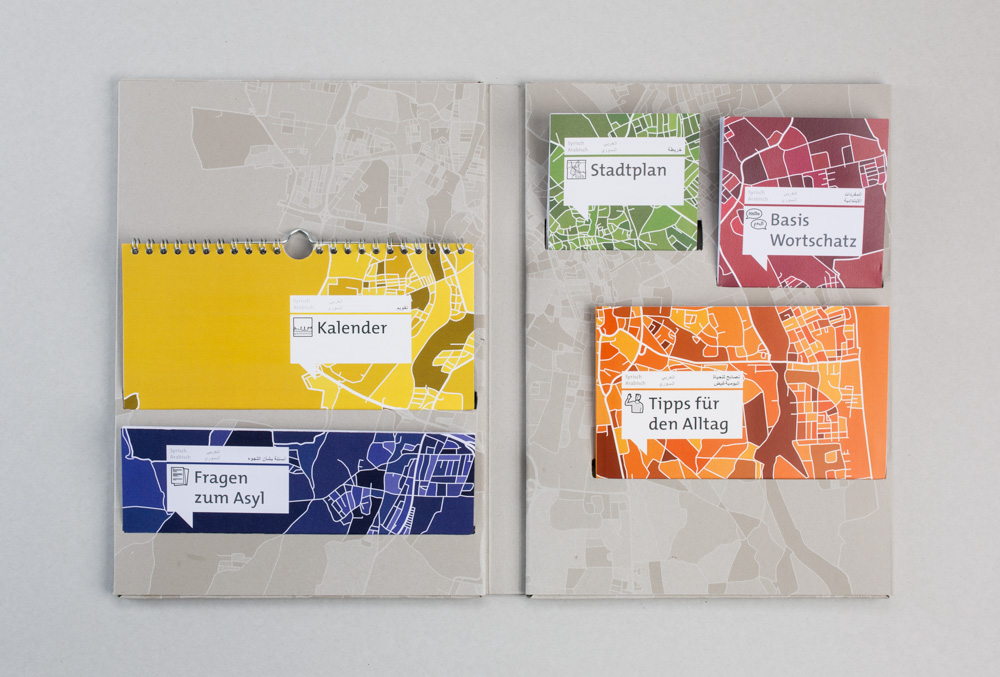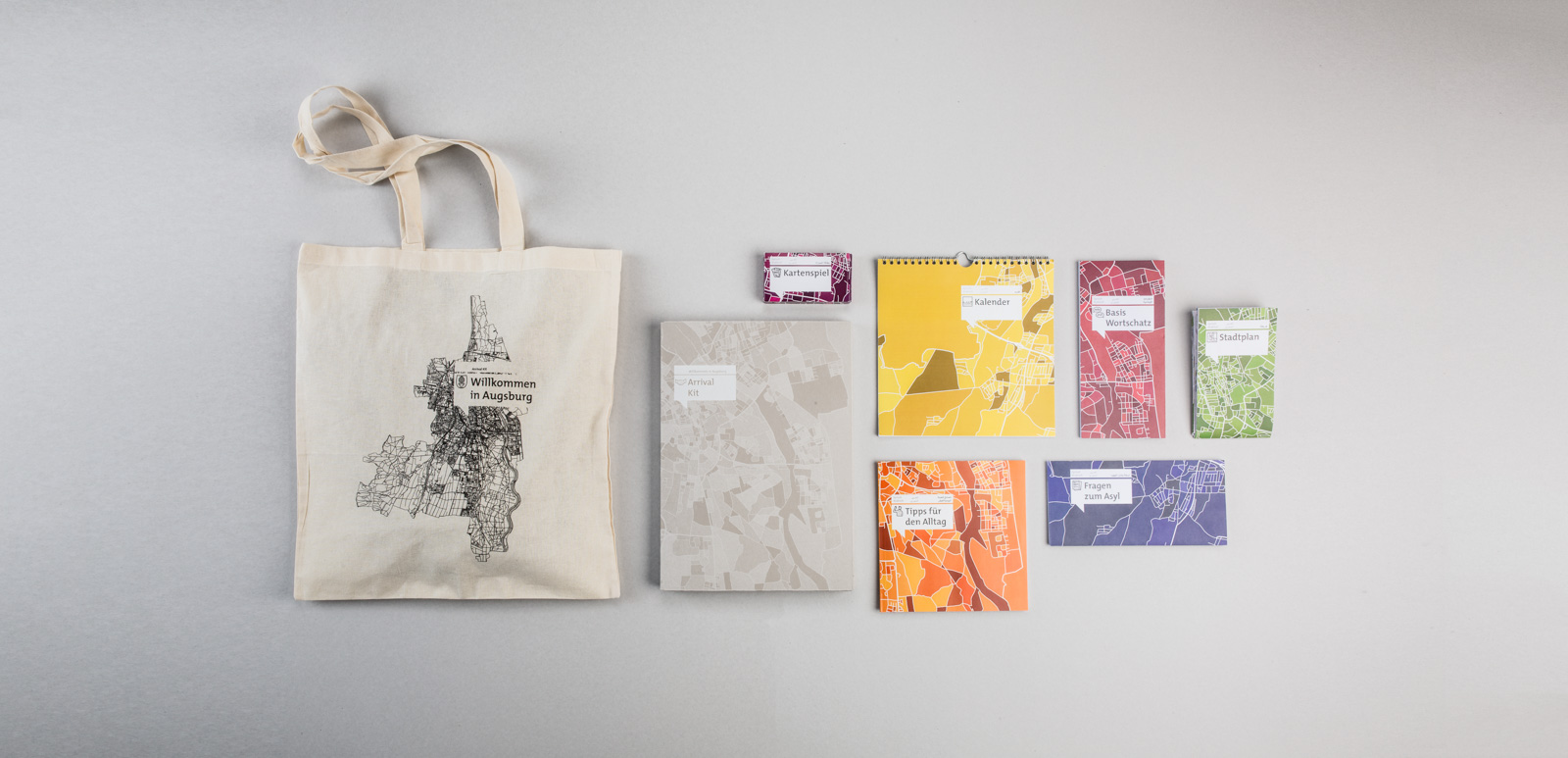
The Arrival Kit is a concept to welcome and inform refugees who arrive in Germany. It covers basic information, with a priority on helping asylum seekers to socialise and to explore.
The project started 2015 as my bachelor thesis. Based upon broad research and with the help of refugees, volunteers, charitable organisations and authorities I identified existing problems and developed solutions.
Visually I aimed for intercultural intelligibility and plainness, while considering practical aspects and production costs.
Today I am still working on the project, adapting the content to the lokal needs of the city Augsburg and finalising it for realisation.

The modular setup of the Arrival Kit is a key feature:
it allows for quick and economical replacement and keeps the
single elements handy. The five modules cover different legal
and social aspects as well as everyday-life situations and are
designed as a visual and structural framework for local content.

Five elements form the »Arrival Kit«, each of them serves a different purpose:
Calendar – decorates walls and motivates to tour around Augsburg
Questions on the Asylum – covers the hard facts
City Map – lists POIs, guides and inspires to walk about
Basic Vocabulary – encourages to learn German
Tips for Everyday Life – gives advise on how to handle everyday life in Germany (and the Germans)
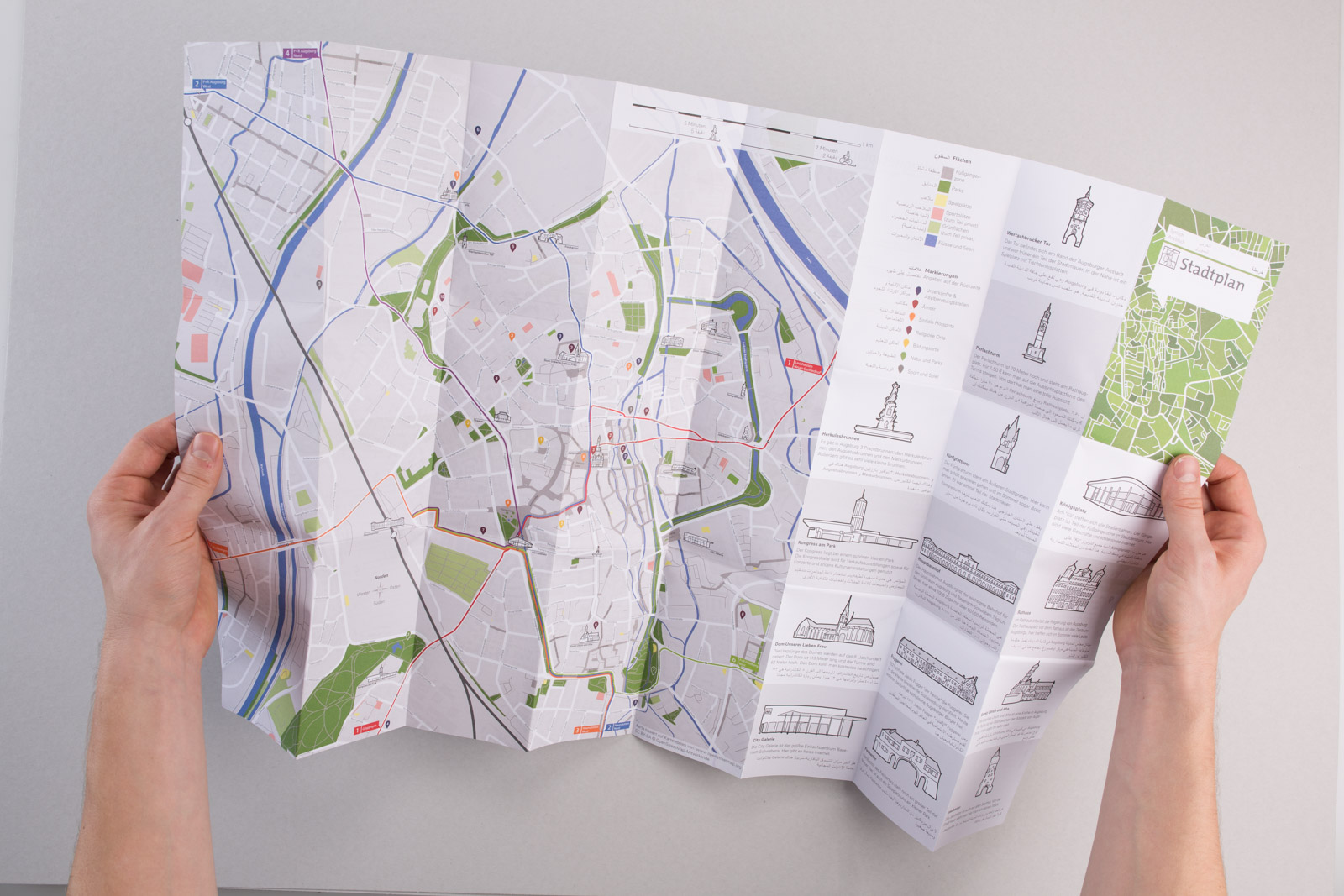
After presenting a first prototype of a city map to refugees I was surprised to learn that most of them had never seen or used a paper map before. I had to explain things I had taken for granted and realised that they had a completely different approach.
So we worked out how to make the map accessible:
To make orientation easier, the map now highlights rivers and greens, the tram-network and recognisable buildings. Additionaly, distances are not only given in kilometers, but also in walking- and biking-minutes.
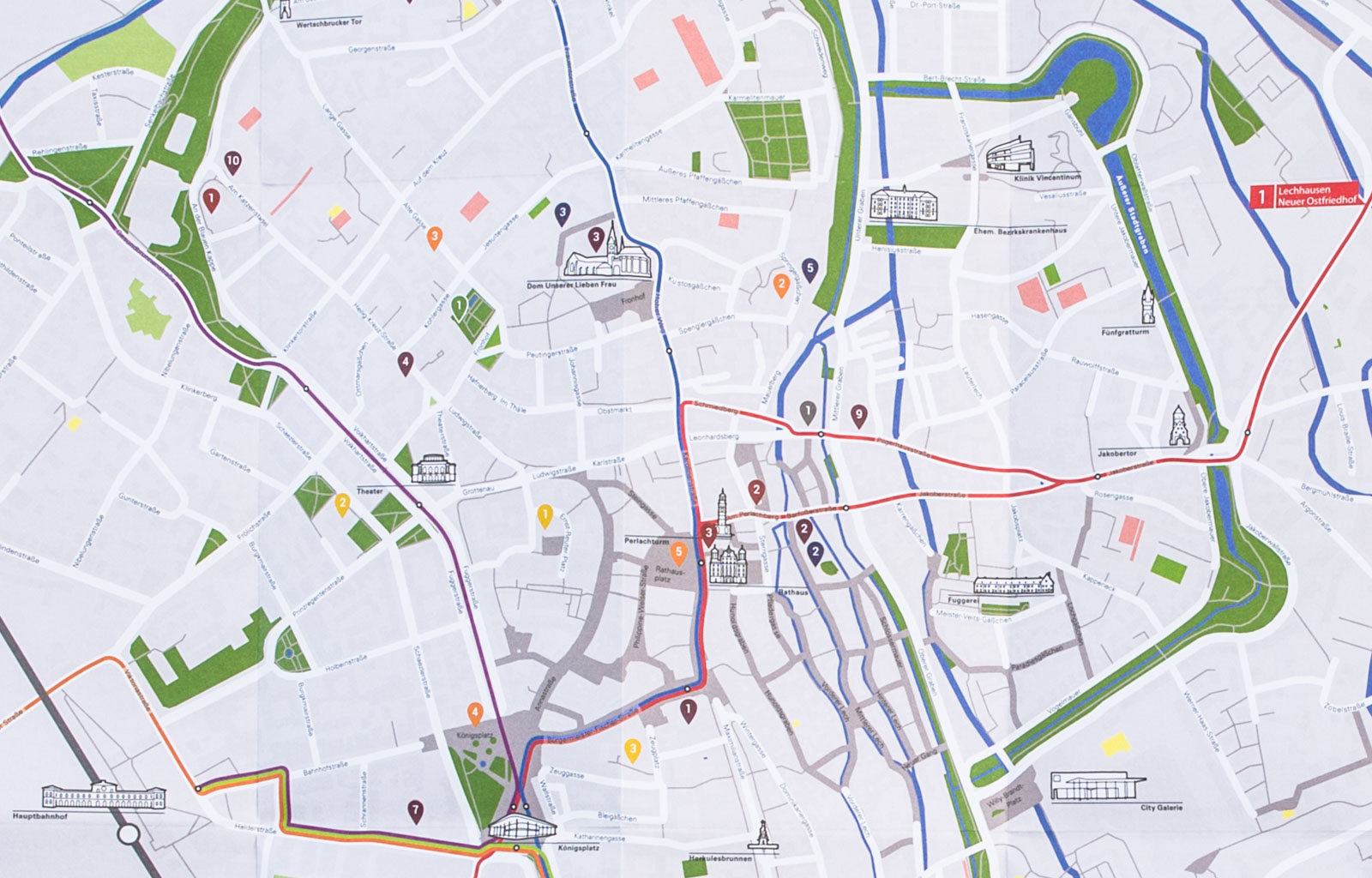

How do you explain things to grown up people from completely different cultural backgrounds on an equal footing?
The image shows one page in the »Tips for Everyday Life« on the topic of queuing. Asylum seekers shoving can be problem for both themselves and authorities, slowing down bureaucracy even further.
Instead of commanding to queue, the brochure recommends to do so and gives a number of reasons, wrapping them into a visual story that most asylum seekers can relate to and supporting them with textual facts.
And while communication on equal footing is fair, a further intention is that a person understanding a rule is more likely to accept it.
Additional information:
Doing research I realised that most existing information materials used a tonality which reminded me of parents educating their children. If visual material was used at all, most of it was reminiscent of prohibition signs. I tried to communicate as deferential as possibly.

